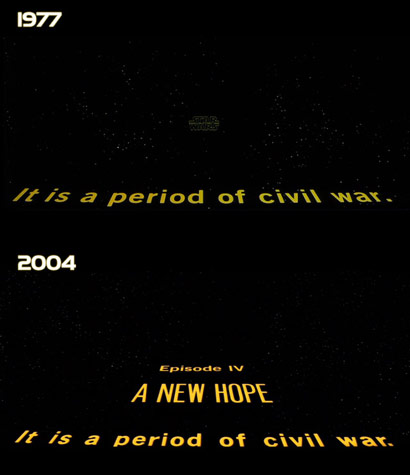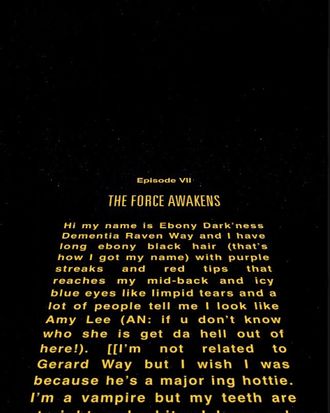
When Star Wars Episode IV: A New Hope originally hit theaters in 1977, it was simply called Star Wars. One thing is for sure-although the film didn’t release with a different title, it released with one that is now considered incomplete. Just as the films have been modified and altered in numerous ways over the decades, his anecdotes about Star Wars’ beginnings have changed. More than 40 years later, the after-effects of Star Wars’ classic opening shot are still being felt.George Lucas’ statements about the early development of Star Wars (1977) have not maintained continuity. The Star Destroyer opening to Star Wars was so effective that it would, of course, be riffed on over and over again at the start of every film that followed, from the probes descending to Hoth in The Empire Strikes Back to the First Order Star Destroyers in The Force Awakens. That was a good example of forcing people to look at something: this gigantic thing coming overhead with very strong perspective lines. People were expecting a 2001 shot and then… it’s like the Indians attacking a stagecoach in space. What’s going to happen? Is there going to be a nice little ship that comes in slowly. Everybody thought, Oh, here’s a nice starfield and here’s a nice little planet. “It was such a great way to start a film and it caught the audience off-guard.

Joe Johnston, who’d been instrumental in visualizing George Lucas’ ideas, agrees that its sense of scale and weight was what sold Star Wars to an unfamiliar audience:
STAR WARS INTRO SCRIPT MOVIE
My thinking was that this is probably the most important shot of the movie – if we don’t grab the audience with the beginning shot of the movie we’re in trouble.” “We were dumbfounded the next day,” Edlund said “it was just amazing how well it worked. The fleeing Tantive IV Blockade runner, on the other hand, was built a mere four inches long, which just shows how successful ILM were in making the ships look like real, working craft. In order to create the illusion of a vast Star Destroyer, modelmaker Grant McCune encrusted the underside of the three-foot-long ship with dozens of tiny pieces of plastic – otherwise known as greebles, which give small objects the impression of scale. We were getting toward the end of production and we didn’t have that opening shot and I just started worrying about it.” But we didn’t have enough track to do that. “Initially, George was thinking we’d build a big model and truck the camera over it. “We just kept talking about it and talking about it,” Edlund said, in Ian Failes’ book, Masters Of FX.
STAR WARS INTRO SCRIPT HOW TO
The big question was, how to execute this immensely complicated sequence? With time running out, visual effects supervisor Richard Edlund was growing increasingly nervous.įurther Reading: Star Wars Streaming Guide

I’m sure he must have played that sequence in his head 100 times, because when he was describing it, he knew precisely what it wanted it to look like.” That whole opening sequence was really George’s idea he knew exactly how he wanted it to work. We were really just tossing ideas back and forth. “I don’t really remember working from the script, but I recall sitting down with Dykstra and having meetings, going over storyboards and shots.

“There was a script,” Johnston told Star Wars Insider in 2012. It’s arguable that the sequence helps set the tone for the entire film from both a visual and aural standpoint, bracing us for a galactic fairytale that is dramatic and faintly surreal. Legend has it that audiences whooped and cheered when they first clapped eyes on those soaring vessels back in the 1970s. It’s the perfect visual representation of the tiny rebellion pitched against the fascist might of the Empire.įurther Reading: Everything We Know About Star Wars Episode IX The Star Destroyer, on the other hand, is gigantic and streamlined, like a huge sword honed to a fine point. The first ship, a Blockade Runner, is small and somehow ramshackle looking, its battery of huge engines strapped awkwardly to its narrow hull. A viewer could completely ignore the scene-setting scroll up of text and still get an idea of what Star Wars was about from that single image.

Like all great cinema, it told acres of story without a word being spoken. Yet that opening shot was far more than merely a fancy special effect.


 0 kommentar(er)
0 kommentar(er)
